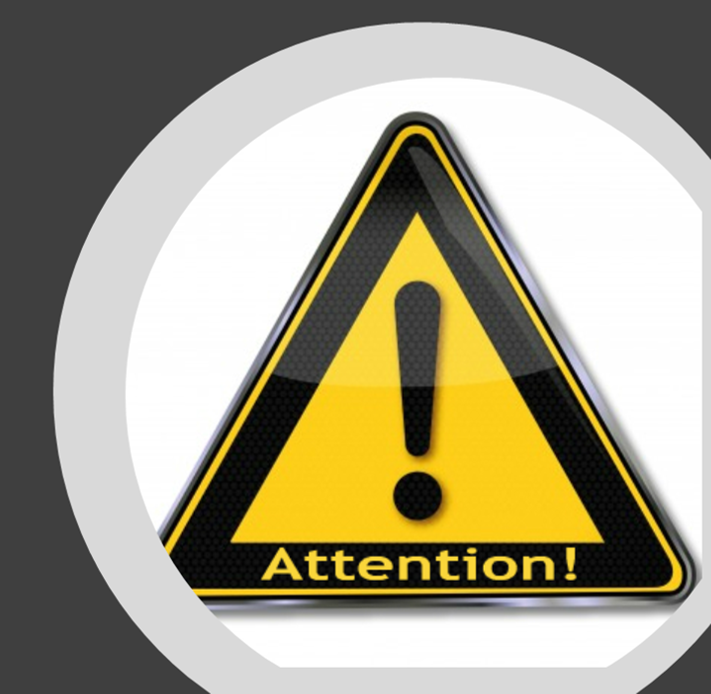July 1 is that magical day when Federal Regulations affecting institutions that participate in Title IV federal financial aid programs become effective for regulations that were released by the U.S. Department of Education by November 1 of last year. The purpose of this timing is for financial aid offices at institutions to have time to implement any new regulations for the new financial aid year.
This year is no exception! Not only are we dealing with how the pandemic has affected postsecondary institutions since March, but we are all looking toward the new academic year and trying to make reasonable decisions about the delivery of education and maintaining academic continuity for our students.
In today’s post, we will review the three regulations effective July 1st, and discuss the potential impact of each:
- Federal regulations that repeal the 2014 Gainful Employment Regulations (final regulations released 7/1/19).
- Regulatory action that rescinds the Gainful Employment regulations from 2014 and removes and reserves subpart Q of the Assistance General Provisions in 34 CFR 668.
- Regulatory action that rescinds subpart R of the Student Assistance and General Provisions in 34 CFR 668.
- Federal regulations that revise Borrower Defense to Repayment Rules (final regulations released 9/23/19).
- These regulations were written by the Department of Education after a failed negotiated rulemaking revise the Obama-era borrower defense regulations that were effective July 1, 2017.
- Federal Regulations for Accreditation and State Authorization (final regulations released 11/1/19).
- Regulations came from the April 2019 consensus in the federal rulemaking process.
- Includes the preparation and release of public and individualized notifications for the institutional programs leading to professional licensure or certification for face-to-face programs and distance education.
Federal Regulations that Repeal the 2014 Gainful Employment Regulations
What is it?
Regulations originally developed by the Obama Administration were intended to ensure that non-degree programs offered by nonprofit or public institutions and all programs offered at for-profit institutions must lead to “gainful employment” in order to participate in HEA Title IV federal aid programs. The regulations required disclosures from the institution, including Debt-to-Earnings rates to show whether the program prepares students for gainful employment in a recognized occupation. These regulations have been subject to many delays and court rulings. A federal rulemaking process in 2018 to review and revise the regulations did not meet consensus by the negotiators. The Department then prepared and released proposed rules in August 2018 for which the Department received almost 14,000 comments. The release of the final regulations one year ago included a provision for early implementation upon the discretion of the institutions.
How does this affect the institution?
The new regulations rescinds and removes and reserves Subpart Q and also rescinds Subpart R of 34 CFR 668.
The Department believed that the debt-to-earning rate formula was flawed and determined that the College Scorecard would be selected as the tool for delivering the necessary data for students to make informed enrollment and borrowing decisions. The institution will no longer be required to issue warnings and notifications in a year that a program is at risk of losing eligibility based on the debt-to-earning rates as directed per Subpart Q. Institutions will no longer be required to report data elements for the purposes of calculating the debt-to-earnings rate. Additionally, disclosures for Gainful Employment programs will no longer be required. The Department notes that some of these disclosures are required in other regulations found in the Code of Federal regulations.
Federal Regulations that Revise Borrower Defense to Repayment Rules
What is it?
Obama-era regulations that expanded a policy referred to as the Borrower Defense to Repayment, became effective in 2017. The regulations increased standards for determining whether a borrower had a defense to a repayment of their federal loan based upon an act or omission of the institution. These regulations were subject to delays and court battles. The Trump administration sought to overhaul the regulations to limit the extent for which a student could raise a claim of abuse by the institution. A 2017 negotiated rulemaking committee failed to come to consensus to craft a new rule. Therefore, the Department of Education was free to develop new language for a rule. A proposed rule was released in August 2018 that received more than 38,000 comments. Final regulations were then released in September 2019. In June 2020, a bipartisan Congressional attempt to block the new rule failed due to Presidential veto that fell short of the two-thirds majority needed to override the Presidential veto. The new and now effective regulations minimize the ability of the federal student loan borrower to cancel their debts due to claims of misrepresentation and deception on the part of the institution.
How does this affect the institution?
The new regulations are perceived to reduce loan forgiveness to the institutions. Lesser standards are set by these rules for which an institution will be held responsible for fraud. However, under the new regulations, institutions must remain financially responsible and still have important reporting requirements. The new regulations appear to simplify the financial responsibility reporting. There are triggering events detailed in 34 CFR 668.171(c) and (d) for which institutions are deemed not to have met financial or administrative obligations. Examples of events include when an institution incurs a liability from a final judgment or final determination that is not subject to further appeal, a proprietary institution that does not meet the required composite score as described in the regulation, and institutions that have violated the requirements of the state authorizing agencies causing termination of the state authorization of the institution. Additionally, institutions must be aware of the definition of misrepresentation found in 34 CFR 668.71: misrepresentation is a statement or omission for which the a person could have reasonably be expected to rely, or has reasonably relied, to the person’s detriment. Types of misrepresentation regarding the institution’s programs are listed in 34 CFR 668.72.
Final Regulations for Accreditation and State Authorization
The Federal Regulations for Accreditation and State Authorization were released on November 1, 2019 . This is the first package of regulations that came from the 2019 Federal Rulemaking for Accreditation and Innovation that came to consensus in April 2019. In an effort to encourage innovation, this federal rulemaking was part of the Trump Administration’s effort to review and revise regulations that inhibit innovation. Two relatively separate issue areas were provided in this first package.
It is important to note that the new federal regulations for state authorization and professional licensure notifications replaced federal regulations that that had been delayed and then became effective in May 2019 due to a U.S. District Court Ruling.
How does this affect the institution?
Regarding accreditation, there are several prominent issues affecting the institution:
- First, institutions should be aware that regulations removed the distinction between regional and national accreditation. Institutions will need to address previous policies that only allowed transfer credits from regionally accredited institutions.
- Second, substantive change approval processes required by the accreditor have been eased. New regulations provide for accreditor staff level rather than full accreditor teams for lower risk changes such as a change in modality. Third, accreditors must demonstrate that the institution has put in place student identity verification to establish that the student registered for the distance education or correspondence course is the student participate in the course. The federal regulations removed the list of suggested methods the institution could use. However, institutions must be aware that the process is still required and if the student could incur expenses to participate in the verification method, the student must be made aware at the time of registration.
Regarding state authorization and notifications, new federal regulations replace previous regulations that had been released in final form in late 2016 at the end of the Obama administration. The institution should be aware that state authorization for distance education is now based upon the location rather than the residence of the student (an important distinction). Institutions must meet the state requirements of states where students are located, or the institution is otherwise subject to the state’s jurisdiction. In the alternative to state approval, the institution may participate in a state authorization reciprocity agreement as defined in the regulations. Notifications that were particular to distance education under the formerly effective regulation 34 CFR 668.50 were found by the negotiated rulemaking committee to already be provided in other federal regulations for all modalities OR new regulations were written to include the notification. This is the case for notification for professional licensure programs. Institutions are now required to provide notifications professional licensure programs for all modalities as is added to 34 CFR 668.43 Institutional Information. No longer is this requirement for just distance education. Now, institutions must provide a public notification for ALL programs (face-to-face and distance education) whether the curriculum meets state educational requirements for professional licensure in ALL states and territories. This has been confusing for institution staff and faculty as well state licensing boards. Institutions should read these regulations carefully to develop these public notifications and provide individualized notifications to prospective and enrolled students. For more specific direction to prepare these notifications the institution may wish to review our previous posts on this topic, Professional Licensure Student Disclosures – It’s the One Month Warning, with No Time-outs Remaining and the Professional Licensure Disclosures – Implementation Handbook.
Conclusion
These particular regulations have simultaneously walked down similar long and complicated paths. It is interesting how they have come to different resolutions as we start the 2020-2021 academic year. We urge institutions to be aware of how these effective regulations affect their institution, as compliance is tied to participation in Title IV HEA programs. With a presidential election around the corner, it will be interesting to see the continued paths these regulation issues take as we enter 2021. WCET and the WCET|State Authorization Network (SAN) will keep you posted as news events occur!
– Cheryl


